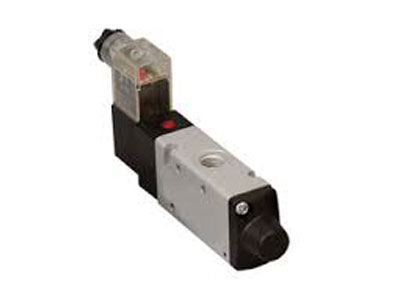Key Takeaway
Proportioning valves are used to regulate the distribution of fluid or gas in a system, ensuring that the correct proportions are maintained. They are commonly found in automotive braking systems, where they balance the brake force between the front and rear wheels to prevent skidding and improve safety.
In industrial applications, proportioning valves are used to mix different fluids in precise ratios, such as in chemical processing or food and beverage production. Their ability to maintain consistent flow proportions makes them essential for processes requiring accurate fluid control.
Introduction to Proportioning Valves
Proportioning valves are sophisticated flow control devices that provide precise regulation of fluid distribution in various systems. These valves can accurately divide or combine flow streams according to predetermined ratios, making them essential in many industrial and process control applications.
The design of proportioning valves incorporates precision-engineered components that ensure accurate flow division or combination. Multiple flow paths within the valve body are carefully calibrated to maintain desired flow ratios under varying system conditions. This makes them ideal for applications requiring consistent flow distribution.
Advanced proportioning valves often include features such as adjustable ratio control and pressure compensation. These features ensure maintained flow ratios regardless of pressure variations in the system, providing reliable and consistent operation in demanding applications.

Common Applications in Industry
Proportional valves are commonly used in industries such as automation, hydraulics, and pneumatics for precise control of fluid or gas flow. They regulate the flow of fluids based on input signals, offering accurate, variable control. They are often used in applications where exact pressure, flow, or position control is crucial, such as in robotics, manufacturing, and hydraulic systems.
These valves are employed in systems that require continuous adjustments, ensuring smooth operation without sudden pressure surges. Their role in maintaining constant pressure and flow makes them essential in industries like automotive, aerospace, and renewable energy.
The precision offered by proportional valves allows industries to achieve high performance while minimizing energy consumption and reducing system wear and tear.
You May Like to Read
Benefits of Using Proportioning Valves
Using proportioning valves in industrial systems offers several key benefits, such as:
1. Improved Efficiency: By controlling the flow of fluids and ensuring they are mixed in the correct proportions, proportioning valves improve the overall efficiency of the system. This can help reduce energy consumption and minimize waste, leading to lower operational costs.
2. Enhanced Accuracy: Proportioning valves ensure that the correct mixture of fluids is maintained, which is critical for industries that require precise formulations or reactions. This ensures that processes are carried out efficiently and without errors, improving product quality.
3. Cost Savings: Proper fluid management leads to less waste of expensive chemicals or materials, resulting in cost savings. Proportioning valves help avoid overuse of resources and reduce the risk of errors in complex industrial processes.
4. Improved Safety: In critical applications, such as chemical processing or oil and gas drilling, maintaining the right mixture of fluids is crucial for safety. Proportioning valves help reduce the risks associated with incorrect fluid ratios that could cause accidents or operational failures.
How Proportioning Valves Improve System Efficiency
Proportioning valves play a significant role in improving the overall efficiency of industrial systems. Here’s how:
1. Accurate Fluid Control: By regulating the flow of fluids in precise proportions, these valves ensure that systems operate at optimal levels. Accurate fluid control prevents overuse of resources and energy, thus improving the efficiency of the system.
2. Reduced Waste: In many industries, overuse or improper mixing of materials can lead to waste and inefficiency. Proportioning valves minimize waste by ensuring that only the necessary amounts of fluids are used. This can lead to significant cost savings over time, especially in industries that rely on expensive materials.
3. Improved Process Stability: Proportioning valves help maintain stable operating conditions by ensuring that the correct proportions of fluids are maintained throughout the system. This stability improves the overall performance and reliability of industrial processes, reducing downtime and enhancing productivity.
4. Energy Savings: Efficient fluid control leads to energy savings in many applications. For example, in hydraulic systems, proportioning valves can optimize the performance of pumps and motors, reducing energy consumption and improving overall system efficiency.
Selecting the Right Proportioning Valve for Your Needs
Choosing the right proportioning valve is essential for achieving optimal performance in your system. Here are some factors to consider when selecting a proportioning valve:
1. Flow Requirements: Determine the flow rate requirements for your system. Proportioning valves come in different sizes and flow capacities, so it’s important to choose a valve that meets the needs of your specific application.
2. Material Compatibility: Ensure that the valve is compatible with the fluids or gases used in your system. Different materials may be required for handling different chemicals, high temperatures, or pressures.
3. Control Type: Proportioning valves are available in mechanical, pneumatic, and electronic control types. The choice of control method depends on the complexity of your system and the level of precision required.
4. Pressure and Temperature Range: Consider the pressure and temperature range within which the valve will operate. Make sure the valve you choose can withstand the conditions in your system without compromising performance.
5. Cost and Maintenance: Evaluate the cost of the valve, including any associated maintenance requirements. Higher-quality valves may cost more initially but can save money in the long run due to their durability and reliability.
Conclusion
Proportioning valves play a crucial role in fluid control systems by regulating the flow and pressure of fluids or gases. They are commonly used in applications requiring precise control, such as automotive braking systems and industrial processes.
These valves ensure optimal performance and safety by maintaining the desired flow rates and pressure levels. Understanding their function and applications is essential for selecting the right valve for specific needs, ultimately enhancing the efficiency and reliability of the system.
